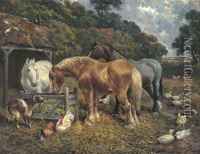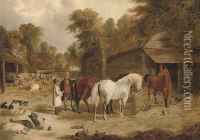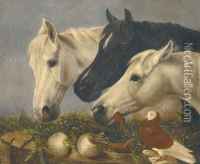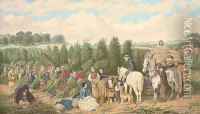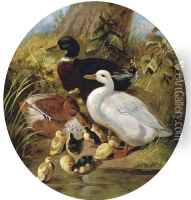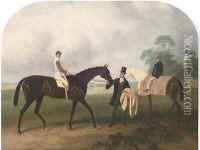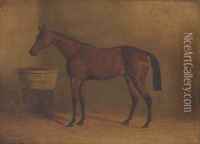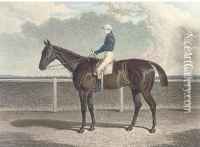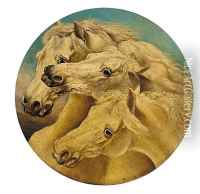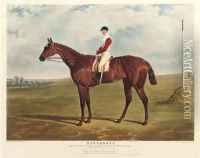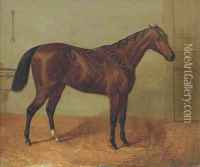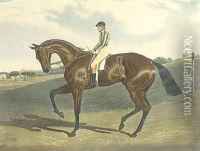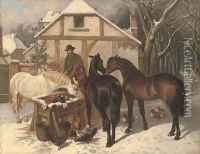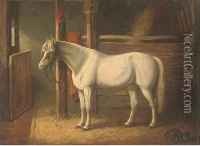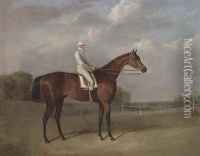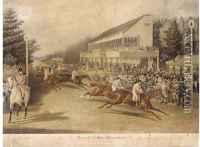John Frederick Herring Paintings
John Frederick Herring Sr., born on 12 September 1795 in London, England, was a notable 19th-century British painter, famous for his depictions of horses and rural life. Initially, Herring worked as a coachman, which allowed him to observe horses closely. During his spare time, he painted inn signs and coach insignias, showcasing his artistic talents.
His love for horses and his growing artistic skill led Herring to become a professional painter by 1814. He gained recognition for his detailed and lifelike portraits of horses, earning the patronage of the Duke of York and other aristocratic figures. Herring's reputation grew steadily, and by the 1830s, he had become one of the leading equestrian artists in England.
In 1833, Herring moved to Newmarket, the center of British horse racing, where he had access to some of the finest racehorses of the time. His work during this period is characterized by dynamic representations of horses in action, often capturing the excitement of the races. Herring's paintings were not limited to equestrian subjects; he also produced landscapes, farm scenes, and even historical genre paintings.
By the 1840s, Herring had moved to London, where he continued to paint and exhibit his work. He was appointed as the Animal Painter to HRH the Duchess of Kent, followed by a later appointment to Queen Victoria. His works were widely collected and remain popular to this day.
John Frederick Herring Sr. passed away on 23 September 1865 in Tunbridge Wells, Kent. His legacy includes not only his beautiful paintings but also a family of artists, as his sons John Frederick Herring Jr., Charles Herring, and Benjamin Herring all became painters, influenced by their father's style and subjects. Herring Sr.'s work is a valuable part of British art history and continues to be celebrated for its contribution to the portrayal of 19th-century rural life and the equine form.
